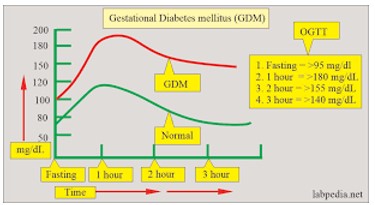A client who has been taking allopurinol prophylactically comes into the clinic with reoccurring gout attack episodes in left ankle. The healthcare provider changes the prescription to febuxostat. Which instruction should the nurse include in the discharge teaching?
Eat high protein foods to achieve ideal body weight.
Report experiencing right upper quadrant discomfort.
Use electric heating pad when pain is at its worse.
Replace dietary table salt with salt substitutes.
The Correct Answer is B
Febuxostat is a medication used to manage hyperuricemia and prevent gout attacks. However, it has been associated with hepatotoxicity, including liver enzyme elevations and liver failure. Therefore, it is important for the nurse to instruct the client to report any signs or symptoms of liver dysfunction, such as right upper quadrant discomfort. This will allow for prompt evaluation and appropriate management if hepatotoxicity occurs.
While maintaining a healthy weight and dietary modifications may be beneficial for managing gout, specific instructions regarding protein intake should be individualized and provided by a healthcare provider or a registered dietitian.
Using an electric heating pad when pain is at its worst may provide temporary symptomatic relief for gout attacks, but it is not specific to the use of febuxostat. The focus of discharge teaching should be on medication adherence, monitoring for adverse effects, and lifestyle modifications to prevent gout attacks.
Replacing dietary table salt with salt substitutes is not a specific instruction for a client taking febuxostat. While reducing sodium intake may be recommended as part of an overall healthy diet, it is not directly related to the use of febuxostat or management of gout attacks. Dietary modifications for gout management should be individualized and based on the client's specific needs and preferences.
Nursing Test Bank
Naxlex Comprehensive Predictor Exams
Related Questions
Correct Answer is ["A","B","C"]
Explanation
Her fasting 1-hour glucose screening level, which was done 1 week prior, is 164 mg/dl. (9.1 mmol/L) Her 3-hour oral glucose tolerance test results reveal a fasting blood sugar of 168 (9.3 mmol/L) and a two-hour postprandial of 220 mg/dL (12.2 mmol/L).
The client has gestational diabetes mellitus (GDM), which is a condition that affects some pregnant women and causes high blood sugar levels. This is bad during pregnancy because it can increase the risk of complications for both the mother and the baby, such as preeclampsia, macrosomia, birth trauma, neonatal hypoglycemia, and congenital anomalies. The client needs to follow a diet and exercise plan to control her blood sugar levels and prevent further complications. She may also need to take insulin injections or oral medications if diet and exercise are not enough. The client should monitor her blood sugar levels regularly and report any abnormal results to her health care provider. The client should also have regular prenatal visits and ultrasounds to check the growth and development of the baby.

Correct Answer is B
Explanation
Shortness of breath on exertion in a client with a history of chronic obstructive pulmonary disease (COPD) and pneumonia indicates increased respiratory distress and compromised lung function. It suggests that the client is experiencing difficulty breathing even with minimal physical exertion. This finding may indicate worsening respiratory status, increased oxygen demand, and inadequate oxygenation. The nurse should take immediate action to address the shortness of breath, which may involve providing supplemental oxygen, initiating or adjusting bronchodilator medications, and monitoring the client's respiratory status closely. Prompt intervention is crucial to ensure adequate oxygenation and prevent respiratory failure.
While the other assessment findings (bilateral diffuse wheezing, temperature of 100.5 °F, and yellow expectorated sputum) are also important and require attention, the shortness of breath on exertion poses the greatest immediate risk and necessitates immediate intervention to address the client's respiratory distress.
Whether you are a student looking to ace your exams or a practicing nurse seeking to enhance your expertise , our nursing education contents will empower you with the confidence and competence to make a difference in the lives of patients and become a respected leader in the healthcare field.
Visit Naxlex, invest in your future and unlock endless possibilities with our unparalleled nursing education contents today
Report Wrong Answer on the Current Question
Do you disagree with the answer? If yes, what is your expected answer? Explain.
Kindly be descriptive with the issue you are facing.
